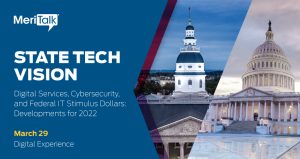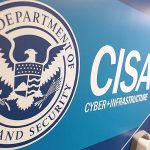John Quinn, the state of Vermont’s chief information officer (CIO) and secretary of the Vermont Agency of Digital Services (ADS), will be leaving his post later this month to work in the private sector, Gov. Phil Scott announced.
As state and local governments look to modernize aging IT infrastructure and offer more self-service to residents in this digital age, it’s becoming clear that successful digital transformations rely on a solid IT Service Management (ITSM) foundation – a foundation that will form the backbone for a broader use of service management best practices. The combination of a clear ITIL framework and a flexible, no code, easy-to-use ITSM platform is essential for any organization striving to meet the needs of its end-users with both limited budgets and resources.
Maryland Gov. Larry Hogan has announced a new program that focuses on providing work opportunities in the IT field to those who want to develop a background in the area.
MeriTalk recently sat down with Andrew Graf, chief product officer and co-founder of TeamDynamix, to discuss how government can recruit and retain top technology talent by tapping into automation to eliminate the daily grind of mundane tasks that lead to burnout and turnover.
The accelerated move toward digital transformation spurred by the COVID-19 pandemic has proven to be challenging to many as they have further embraced hybrid IT structures, according to a recent report from SolarWinds.
State and local governments (SLGs) are taking a page from Federal Cloud First and Cloud Smart modernization initiatives to sunset legacy systems and migrate to the cloud. Modernization efforts have been a top priority for over a decade, with cloud first appearing on NASCIO’s State CIO Top Ten priorities list in 2010 and making the list ever since.
In the last few years, the city of St. Louis has become a hub for public and private innovators of geospatial intelligence (GEOINT).
For state and local governments (SLGs), the time is now to make big investments to address cybersecurity challenges and improve digital citizen services. Fortunately, Congress has put billions of dollars in the Federal funding pipeline heading to states and localities to help jumpstart those efforts.
State and local government (SLG) IT leaders overwhelmingly agree that critical infrastructures are at risk due to legacy applications and systems, according to new research from MeriTalk, underwritten by Google Cloud, Pure Storage, ServiceNow, and TeamDynamix.
With the holiday season upon us, we at MeriTalk wanted to spread some holiday cheer. We’ve gathered up photos of our furry friends dressed in festive attire, meeting Santa, or just enjoying some winter weather.













